Three species of mangroves live in Southwest Florida, the red (Rhizophora mangle), the black (Avicennia germinans), and the white (Laguncularia racemosa). Each of these species can be seen growing at the Conservancy of Southwest Florida Nature Center.
Red Mangroves

 At the Conservancy of Southwest Florida Nature Center, red mangroves grow along the Gordon River, a brackish estuary. The estuary is brackish because salt from Naples Bay mixes with fresh water originating at inland regions of the Gordon River.
At the Conservancy of Southwest Florida Nature Center, red mangroves grow along the Gordon River, a brackish estuary. The estuary is brackish because salt from Naples Bay mixes with fresh water originating at inland regions of the Gordon River.
Red mangroves have elongated, pointed, shiny, green leaves, and reddish colored trunks. Also, as shown in the first photograph, these trees have distinctive prop roots and drop (aerial) roots that extend into the water. The roots support the trees and have the ability to exclude salts from entering tree tissues.

 Red mangroves propagate with propagules that develop from flowers (far left) in the early spring . A propagule is not a seed, but actually a tiny tree. An early stage of a propagule is shown at left. Propagules mature on the tree (shown below) and fall off the tree in September. Once a propagule falls into the water, it floats, and can remain viable for up to a year.
Red mangroves propagate with propagules that develop from flowers (far left) in the early spring . A propagule is not a seed, but actually a tiny tree. An early stage of a propagule is shown at left. Propagules mature on the tree (shown below) and fall off the tree in September. Once a propagule falls into the water, it floats, and can remain viable for up to a year.
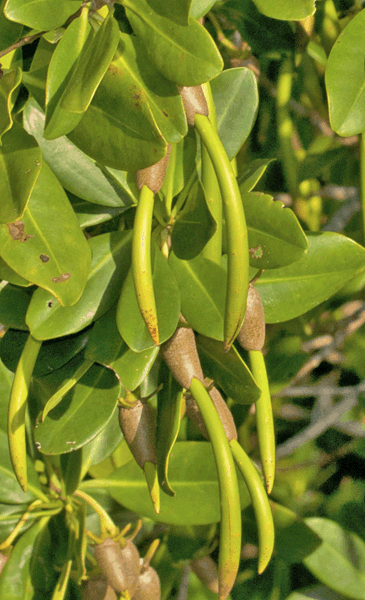
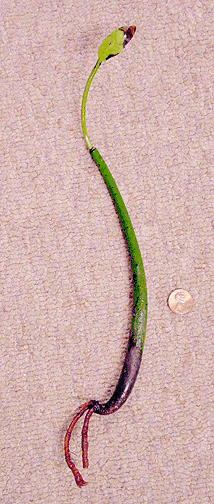
Eventually, the propagule may become lodged in the substrate, and overtime, develop into a large tree. The last photograph shows a propagule with its first roots and a leaf. The photograph shows a penny for scale.
Historically Native Americans used different parts of the red mangrove tree in their daily lives: leaves for tea, frayed ends of twigs for tooth-brushes, propagules for cigars, and wood for smoking meats and fish.
In Southwest Florida, red mangroves are a protected species. In order to trim these trees, a special license is required.
Black Mangroves:
 You can closely observe a black mangrove that grows at the end of the ecotone trail just to the left of the wooden bridge. Black mangroves are also seen on the electric boat ride along the Gordon River.
You can closely observe a black mangrove that grows at the end of the ecotone trail just to the left of the wooden bridge. Black mangroves are also seen on the electric boat ride along the Gordon River.
 These mangroves tend to be higher on the bank of the waterway than the red mangroves. An easy way to recognize black mangroves is to look for their black bark and absence of prop roots and drop roots. As shown in the photograph at right, the black mangrove's roots, called pneumatophores, look like straws poking upward from the leaf-covered substrate. These roots may function for gas exchange.
These mangroves tend to be higher on the bank of the waterway than the red mangroves. An easy way to recognize black mangroves is to look for their black bark and absence of prop roots and drop roots. As shown in the photograph at right, the black mangrove's roots, called pneumatophores, look like straws poking upward from the leaf-covered substrate. These roots may function for gas exchange.
As shown in the first photograph, black mangrove leaves are not as shiny on top as red mangrove leaves and the underside of the black mangrove leaf is white. Black mangroves take in salts from the brackish water and extrude them from the bottom of the leaves. The white color on the bottom of the leaf is created by salt crystals.
 Black mangrove flowers (shown in bud at left) are small and provide an excellent source of nectar for bees to produce high grade honey.
Black mangrove flowers (shown in bud at left) are small and provide an excellent source of nectar for bees to produce high grade honey.
Black mangroves also have propagules; they are small (2 to 3 mm in diameter) and look like flattened lima beans.
Historically, black mangrove wood has been used to make dye and charcoal. Calusa Indians rubbed soot from burned wood on their bodies to relieve the itch of insect bites and leaves were burned for mosquito repellent.
White Mangroves:
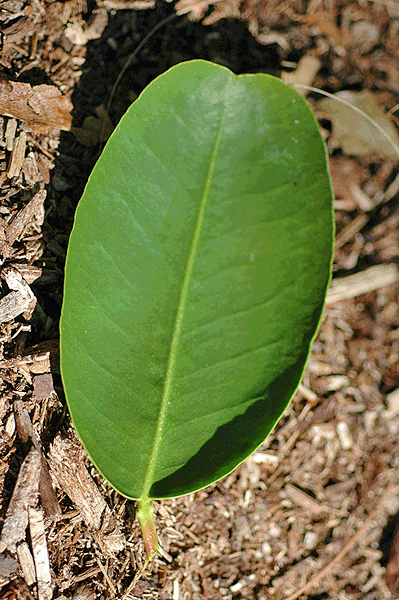
 You can observe white mangroves growing adjacent to the deck at the entrance to the electric boat dock. These mangroves, like the black mangroves, tend to be higher on the bank of the waterway than the red mangroves. An easy way to recognize white mangroves is to look at the leaves.
You can observe white mangroves growing adjacent to the deck at the entrance to the electric boat dock. These mangroves, like the black mangroves, tend to be higher on the bank of the waterway than the red mangroves. An easy way to recognize white mangroves is to look at the leaves.
The leaf is more rounded than a black or red mangrove leaf, and is shaped more like a sugar spoon. The leaf is often notched at its apex (tip), as seen in the far left photograph, and there are two nodes on the stem of the leaf called nectaries (labeled in the second photograph). The nectaries extrude sugars that attract insects.
It is unknown exactly how white mangroves deal with salt in the estuary. To date, there has been no indication whether they exclude salt like the red mangrove or extrude it like the black mangrove, but nectaries do not function in extruding salt.
The first photograph below shows flowers of the white mangrove, while the second photograph shows developing propagules.
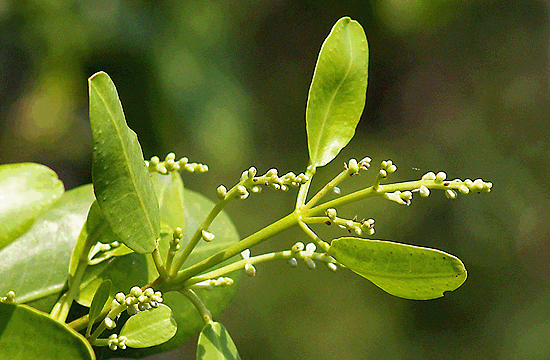
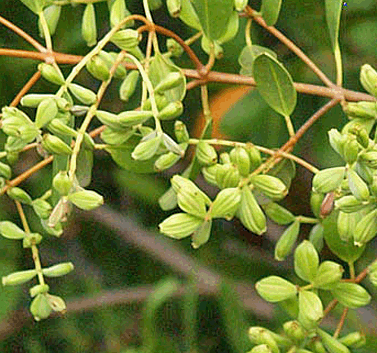
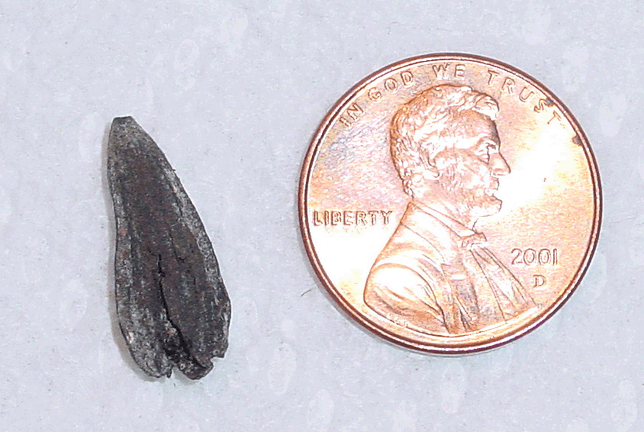
As shown in this last photograph, a white mangrove propagule resembles a grain of rice and is quite small.
